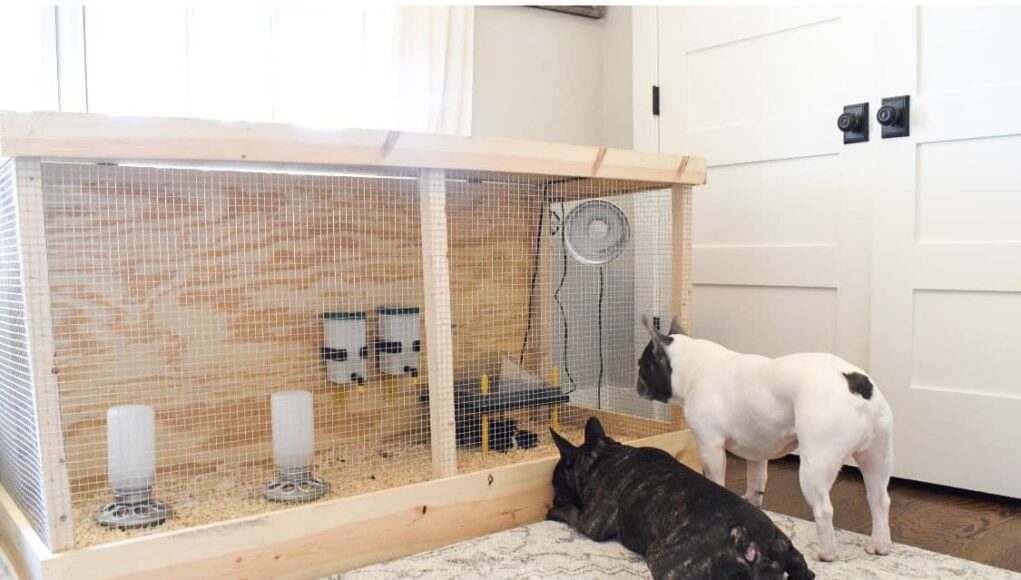If you’re a chicken enthusiast looking for sustainable and cost-effective ways to care for your chicks, a repurposed drawer chick brooder might be just what you need. This innovative approach not only breathes new life into unused furniture but also provides a warm and safe environment for your feathered friends.
In this guide, we’ll explore the benefits of using a repurposed drawer chick brooder, step-by-step instructions on how to create one, and tips to ensure your chicks thrive in their new home.

Why Choose a Repurposed Drawer Chick Brooder?
A repurposed drawer chick brooder is an eco-friendly and budget-conscious choice for several reasons. By reusing old furniture, you minimize waste and reduce costs associated with buying new brooders. Plus, these brooders can be customized to suit your specific needs, ensuring your chicks have a cozy and secure environment.
Benefits of a Repurposed Drawer Chick Brooder
- Cost-effective: Save money by using materials you already have.
- Sustainable: Reduce waste and promote environmental responsibility.
- Customizable: Tailor the brooder to your chicks’ needs and your available space.
Materials Needed for Your DIY Brooder
To get started, gather the following materials:
- An unused drawer
- A heat lamp
- Bedding material (such as pine shavings)
- Chick feeder and waterer
- Thermometer
- Wire mesh
- Tools for cutting and assembling
Step-by-Step Guide: Building Your Repurposed Drawer Chick Brooder
Step 1: Preparing the Drawer
Begin by cleaning the drawer thoroughly. Remove any knobs or handles that might obstruct the chicks’ movement. If the drawer has a bottom, consider reinforcing it to support the weight of the chicks and bedding.
Step 2: Installing the Heat Lamp
Chicks require a warm environment to thrive. Attach a heat lamp securely above the brooder, ensuring it’s at a safe distance to prevent overheating. A reliable heat source is crucial for maintaining the right temperature.
Step 3: Setting Up Bedding and Accessories
Line the bottom of the drawer with soft bedding, such as pine shavings. Place the chick feeder and waterer inside. Position a thermometer to monitor the temperature, ensuring it stays between 90-95F during the first week.
Step 4: Adding Wire Mesh
For ventilation and protection, attach wire mesh to the top of the drawer. This will keep the chicks safe from predators while allowing fresh air to circulate.
Maintaining Your Repurposed Drawer Chick Brooder
Regular maintenance is crucial to ensure the health and happiness of your chicks. Keep the brooder clean by removing soiled bedding and replacing it with fresh material. Check the feeder and waterer daily, ensuring they are clean and filled.
Cleaning and Disinfecting
Regularly disinfect the brooder to prevent the spread of diseases. For detailed cleaning instructions, visit our guide on how to clean a brooder.
Creating a Safe and Healthy Environment
Temperature Management
Maintaining the right temperature is crucial for your chicks’ development. Gradually reduce the temperature by 5F each week until it reaches 70F. Use a reliable thermometer to monitor changes.
Feeding and Nutrition
Ensure your chicks have access to fresh feed and water at all times. For tips on keeping feed dry, check out our article on keeping feed dry.
Troubleshooting Common Brooder Issues
Overheating
If your chicks appear lethargic or are panting, they may be too hot. Adjust the heat lamp and ensure proper ventilation.
Chilliness
Conversely, if chicks huddle together or chirp loudly, they might be cold. Lower the lamp or add more bedding to retain heat.
Conclusion
Creating a repurposed drawer chick brooder is a rewarding project that combines creativity with practicality. By following these steps, you can provide a safe and comfortable environment for your chicks while promoting sustainability.

FAQs
What size drawer should I use for a chick brooder?
Choose a drawer that’s spacious enough for the number of chicks you plan to house, allowing them room to move and grow.
How often should I clean the chick brooder?
Regular cleaning is essential. Replace bedding and clean the brooder at least once a week, or more often if it becomes soiled.
Can I use other materials for bedding?
Yes, alternatives like straw or shredded paper can also work, but ensure they are safe and non-toxic for chicks.
This article contains affiliate links. We may earn a commission at no extra cost to you.











